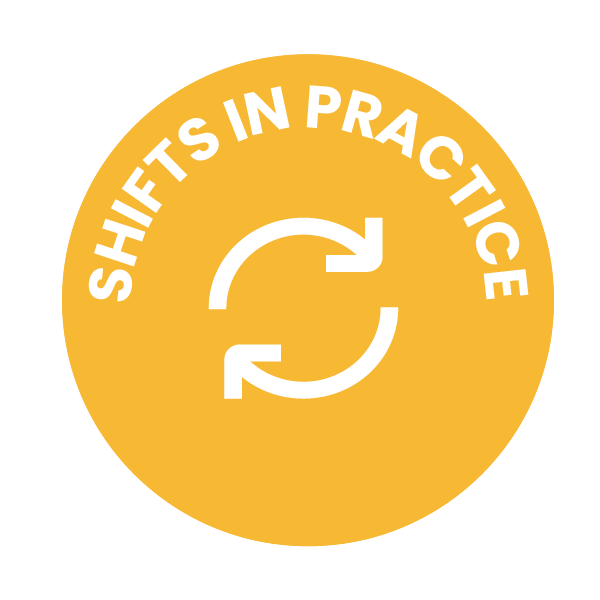Building Belonging: Lessons from GOA Students
Feeling like you truly belong at school can make all the difference in a student’s experience. It’s that sense of being accepted, respected, included, and supported—key ingredients for academic success and meaningful engagement. At GOA, students describe belonging as the comfort of being at home or the satisfaction of fitting the final piece into a jigsaw puzzle, completing the bigger picture.
When we think about designing a classroom—whether online or in person—teachers and leaders can make choices that promote belonging. In her book, Design for Belonging, Susie Wise of Stanford University’s D.School shares practical guidance that educators can use to design spaces and experiences that cultivate belonging. These design levers are like building blocks for belonging. Considering things like the communication structures, rituals, objects, roles, and space within the classroom help us become more intentional about who might feel like they belong, and who might feel disconnected in a learning space.
For students in GOA courses, some of the most important building blocks that positively affect their belonging are the groups they are in, the relationships they develop, and the habits or rituals of the course.
Grouping
In many educational settings, students don’t have much choice about who they are learning with. Their peers become classmates because of scheduling snafus or requirements. But the experience of being in a course with others who are truly interested in the same subject as you can contribute to a sense of belonging. For Danya, a grade 12 student from Greens Farms Academy, the experience of sharing an interest was a jumping off point for building stronger connections with her peers.
Forming an intellectual community based on mutual interest in a subject allowed Danya to connect with her peers and learn about the differences each person brought to the course from their own unique contexts around the world.
Habits
People experience belonging differently when placed in different groups. Even though students may share similar interests, they are not able to connect with each other unless they are given the opportunity to interact. Michael, a student at Rutgers Prep, pointed out that for him, the connections he develops with peers come from discussions about the course material. “Recently, in my game theory class, we had a discussion post assignment about analyzing a real-life situation and describing how it can be characterized as a strategic game,” he said. “My post was about a video analysis of my basketball team at one of their games. The replies to that post made me feel like I had a lot in common with my classmates, even though I’ve never talked to them before, and that kind of increased my sense of belonging.”
When considering how pedagogy impacts belonging, students point out that courses that are more lecture based - that don't invite the student to show up with their whole self and fully invest and participate - don't promote belonging in the same way as projects where students have voice and choice. “I think getting to have more personalized projects and also more conversation, and like getting to use your voice is something that really allows for that," says Danya.
Relationships
Just like the relationships that students develop with each other promote their sense of belonging, the relationship between students and teachers is of paramount importance.
Without the feeling of comfort that comes from strong teacher-student relationships, students are less likely to contribute to the course in a meaningful way and request help when they need it. For Michael, having a well-developed sense of belonging in his course provided him the connection he needed with his peers and his teacher: “I think my sense of belonging has been pretty solid throughout the courses I've taken, and it's helped me do well because I'm able to reach out to people and ask for help when I need it. I wouldn't be able to do that without a sense of belonging.”
Every student is struggling with their own set of challenges. Whether it’s online or in person, students are typically not only dealing with one class. When students are overwhelmed, they often disengage. For students who pride themselves in doing well in courses, the experience of struggling to understand or even keep up can be a shock. The teacher's understanding and support can bring the student back to a feeling of belonging, and ultimately, academic success in the course. When a teacher is perceived as dismissive of or indifferent about a student’s experience, the implicit message they are likely sending is that the student doesn’t belong in the course rather than the student should seek out help or try a different strategy. For students who are taking on new challenges, a sense of belonging in school contributes to their perception that they are capable of learning.
Belonging No Matter Where
Having a sense of belonging in an online course feels different than what feeling a sense of belonging might feel like in an in-person course. While online courses typically bring students into contact with peers who don’t share their location and with whom they will likely not form long-term relationships, the experience of developing a sense of belonging in an online community contributes to a student's development and can give students a sense of connection. Students develop their ability to seek out the kinds of commonalities that promote their sense of belonging in school.
"I think kind of branching out and meeting new people who live in a totally different part of the world than you, and maybe go to a really different school than you, and have different classes, and the only thing, like, I guess, connecting you is this, like, interest in the same subject, can really develop into something where you actually are more similar than you thought. And I think that's really cool." - Lola K. (Student Ambassador from the American International School of Budapest)
Belonging is a social experience—one we can cultivate by making intentional design choices. Whether online or in person, we gain a better understanding of how to leverage the building blocks of belonging by listening to students share about their experiences and responding to their needs. When we prioritize belonging, we create learning environments where every student feels seen, supported, and empowered to fully engage.
For more, see:
- Belonging Beyond the Bell
- Creating Spaces for Dialogue That Matters: World Cafe
- A Real World Value-Based Model for Student Well-Being

This post is part of our Shifts in Practice series, which features educator voices from GOA’s network and seeks to share practical strategies that create shifts in educator practice. Are you an educator interested in submitting an article for potential publication on our Insights blog? If so, please read Contribute Your Voice to Share Shifts in Practice and follow the directions. We look forward to featuring your voice, insights, and ideas.
GOA is a nonprofit learning organization that reimagines learning to empower students and educators worldwide. In partnership with our global network of 150 schools, we provide interactive, relationship-driven courses, expert resources, and innovative thinking that help to expand and elevate academic programs. Together, we help students and educators become open to the extraordinary.
Follow us on LinkedIn for the latest learning opportunities and news. Sign up for GOA Insights, our newsletter focused on innovative ideas and best practices for the future of learning. Become a Member School.
